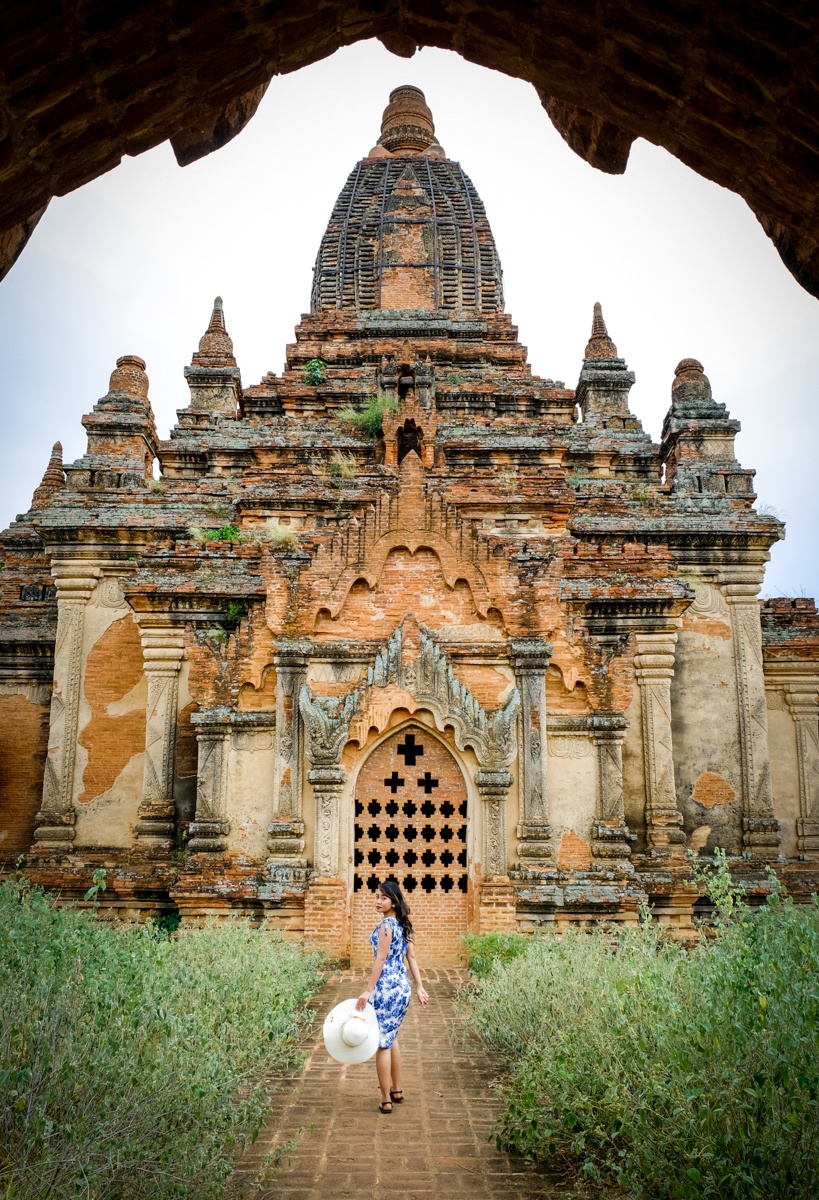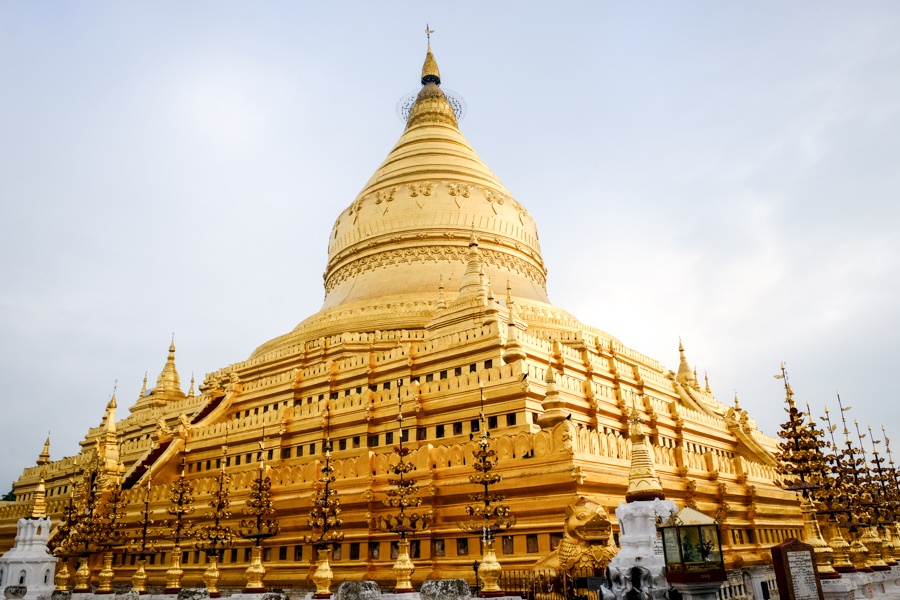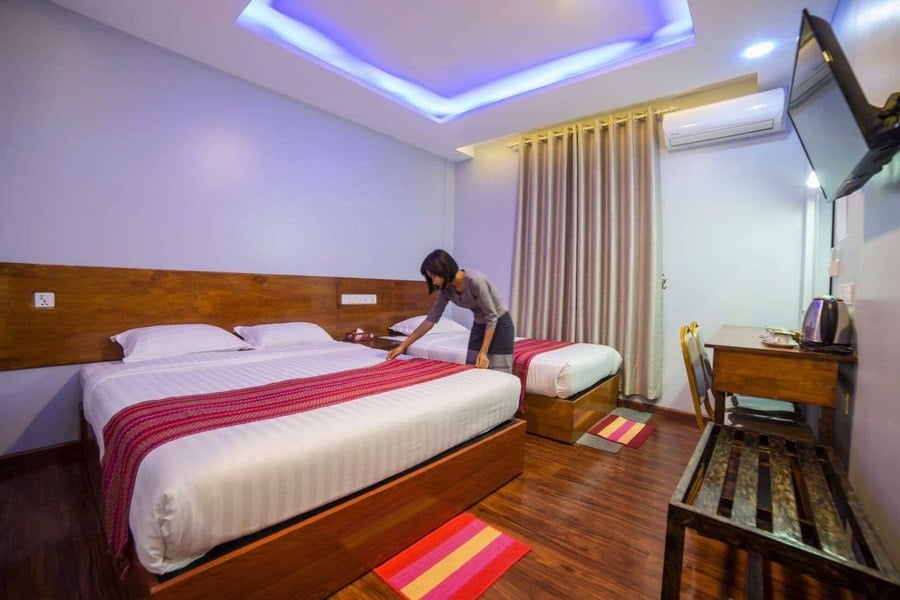The forgotten temple city of old Bagan Myanmar is like a bizarre fairytale, with a landscape of mysterious and exotic pagodas that goes beyond just culture shock.
We felt like time travelers stepping into the ancient ruins of the Bagan Myanmar temples. In ages past, there were more than 10,000 shrines and monasteries here, and the Burma temples still standing are completely fascinating to explore and photograph.
This travel guide for the Bagan temples will explain how to get there, which Myanmar temples to see, and everything else you need to know before you go!

History Of Old Bagan
Old Bagan was once known as Pagan, a temple city founded by the Pagan kingdom in ancient Burma during the 9th century.
At that time, it was a religious city and capital of the rich Pagan empire, and more than 10,000 Buddhist monasteries, stupas, and small temples were built there over the course of 250 years.
In the late 13th century, the Pagan empire was conquered by Mongol invaders under Kublai Khan, and the temple city of Pagan was slowly abandoned and fell into decay.


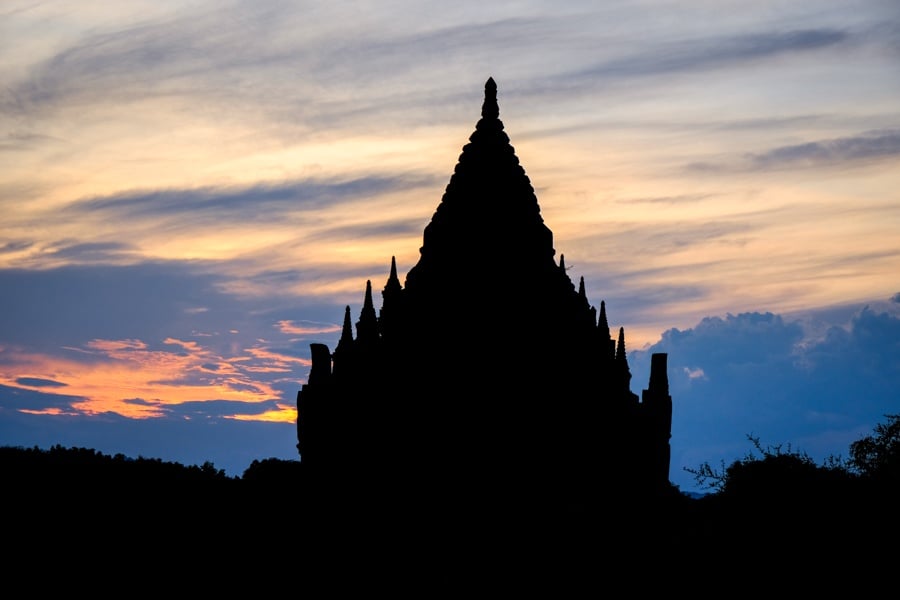
Repeated earthquakes damaged Bagan over the years and destroyed many temples, and only about 2,000 remain to be seen today.
Sadly, some of these temples were further ruined by botched government renovation attempts in the 1990s (around the same time Burma became Myanmar).
The temple city of Bagan finally gained UNESCO World Heritage status in 2019 for its cultural, historic, and religious significance, and its popularity has continued to grow since then.
Today, the Old Bagan temples are the main tourism attraction of Myanmar, and the country got 4.5 million tourist arrivals in 2019.
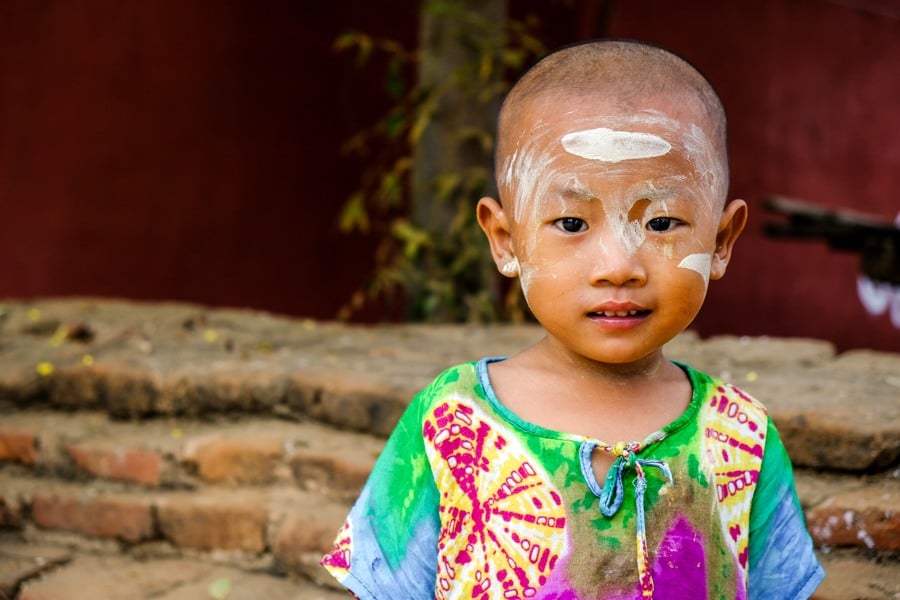
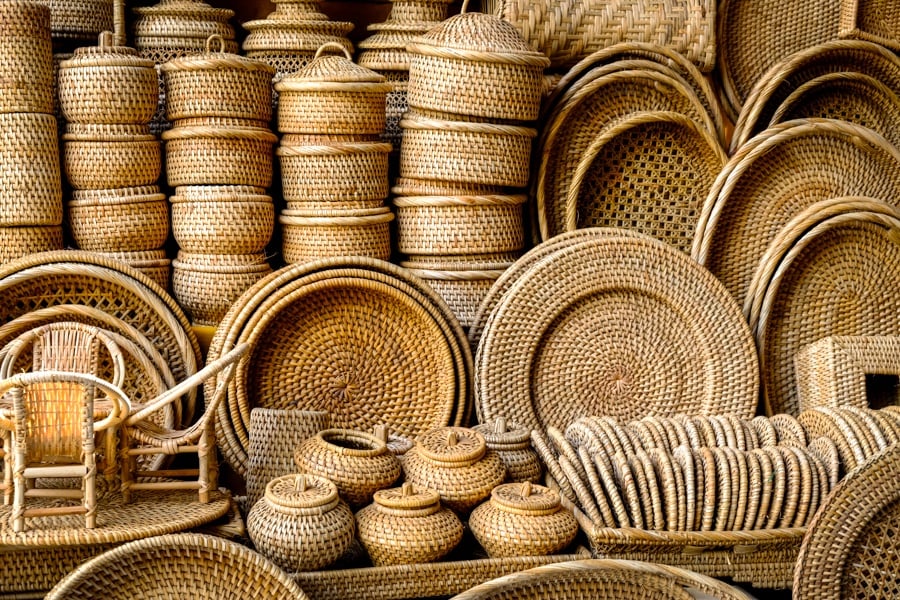
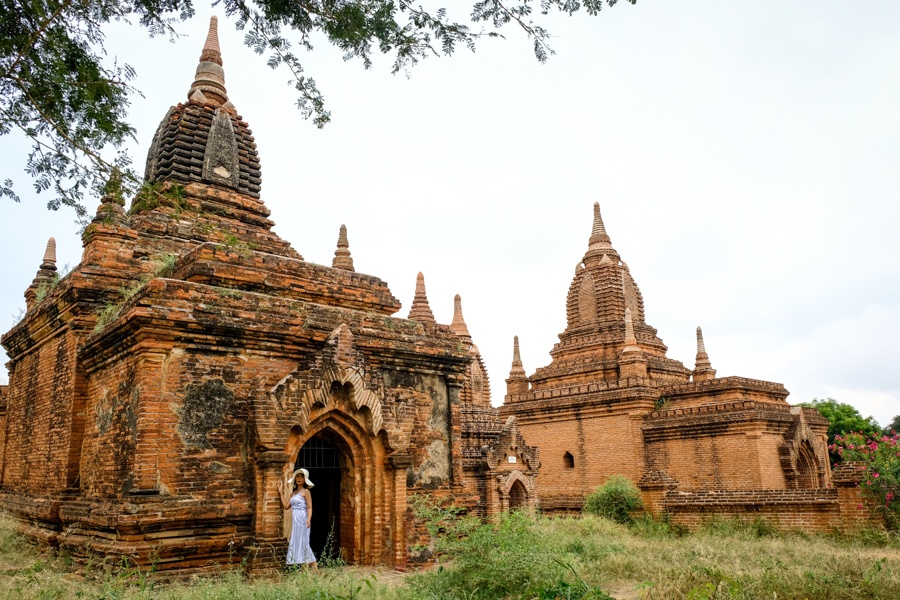
Best Bagan Tour Packages
First of all, if you’re looking for a good driver/guide to show you around the Burma temples, there are a range of options that include guided full day tours by van, motorbike tours, and private taxi drivers in Bagan.
These prices are pretty competitive based on what we saw being quoted in Myanmar, and the online reviews are very positive too.
We’ve used these companies for lots of tours and activities around the world, and they’re great! Highly recommended.
How To Get To Bagan
Bagan is located in central Myanmar, about 110 miles (180 km) southwest of Mandalay city.
The most popular way to get to Bagan is by air or road, although you can also go by train or slow boat.
See below for more info on each of these options!
• Flights
Flying is the quickest (but most expensive) way to get to Bagan.
It has a small airport in Nyaung-U (NYU) with domestic flights from other airports in Myanmar, but no international routes as of 2020. One way flights from Yangon (RGN) take 1.5 hours and cost up to $100 USD, while flights from Mandalay (MDL) take only 30 minutes and cost $65.
You can shop for flights to Nyaung-U at Skyscanner.
• Taxi
A one way private taxi to Bagan from Mandalay takes about 3-4 hours, and can be arranged by your Bagan hotel or booked online.
You can book a private taxi on GetYourGuide for $87 USD, which is one of the cheapest prices I’ve seen online or offline, and they have good ratings.
We had a great experience with the taxi service. The vehicle was clean and had good A/C. The driver picked us up at the Mandalay airport and then dropped us off directly at our hotel in New Bagan.
• Bus
There are daily buses running to Bagan from Yangon, Mandalay, and Inle Lake.
The trip to/from Mandalay costs $7 and takes about 5 hours. In the future, I think we would do this in both directions rather than use the pricey taxi.
We booked the bus online with JJ Express when we went back to Mandalay from Bagan, and we were really happy with their service. The bus had good A/C and the seats were very comfy.
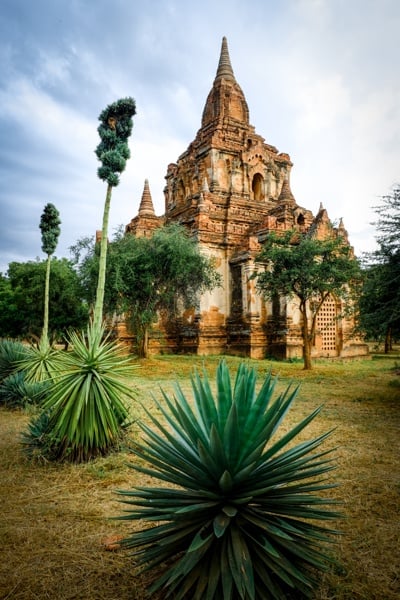
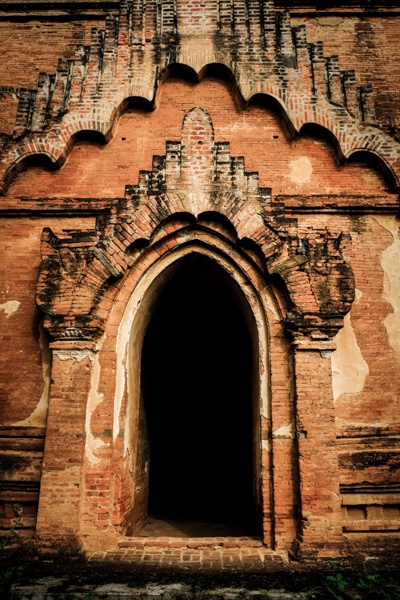
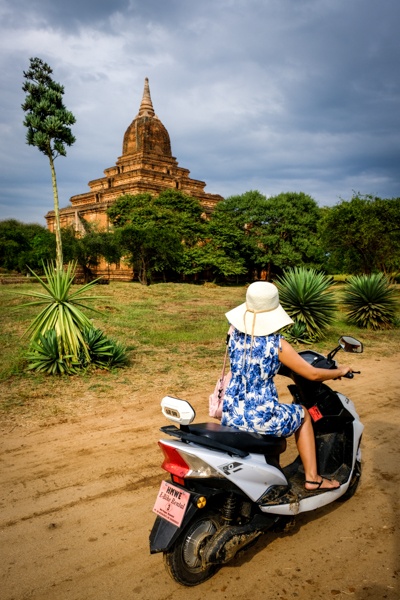
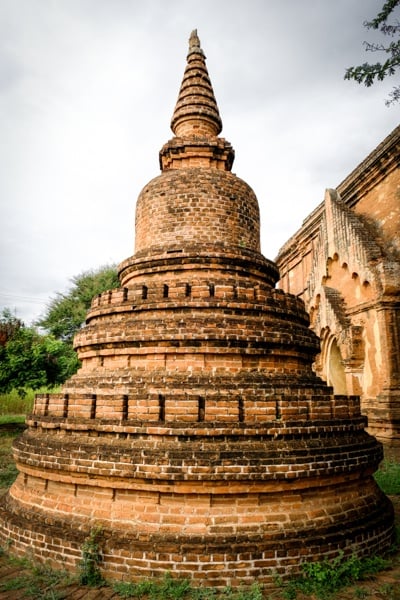
Visiting The Bagan Temples
• Entrance Fee
The ticket price for the Bagan area is 25,000 Kyats or 20 USD/EUR.
You can pay in either currency, but with the current exchange rates it’s probably cheapest to pay in Myanmar Kyats.
The ticket is good for all the Burma temples and lasts 5 days. However, they rarely check tickets anywhere in Bagan and it’s a hard rule to enforce because the temples are so spread out, so there’s a good chance you won’t even have to pay at all.
We spent days exploring all of these Bagan Myanmar temples, and the only place we were ever asked to pay for tickets was when we went to the man-made hill at Sulamani for viewing the sunset (which was pretty mediocre anyway).
We were kicking ourselves afterwards. If we hadn’t gone to that one spot, we never would’ve had to pay anything to visit Bagan!
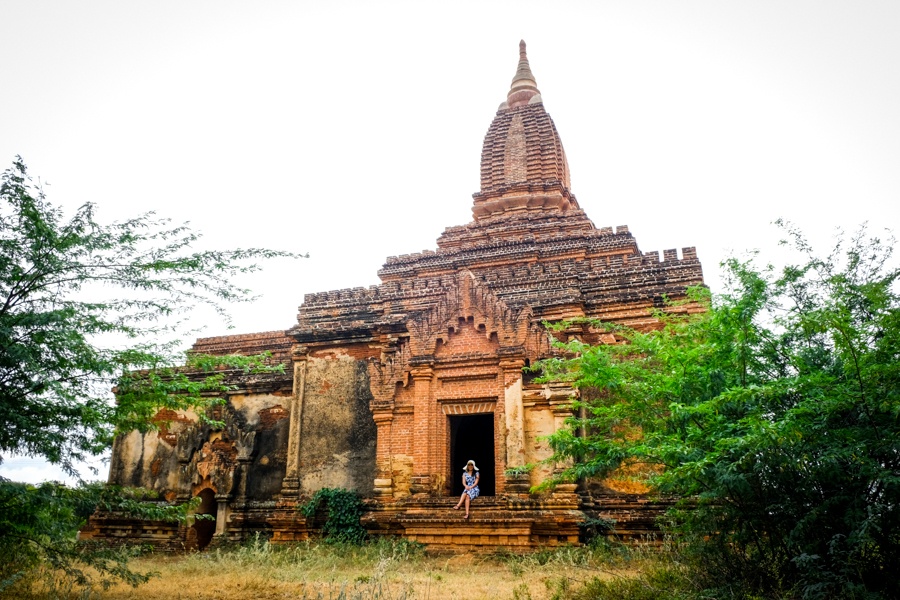
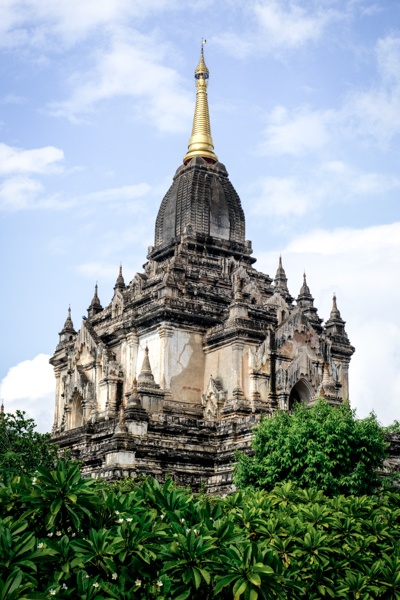
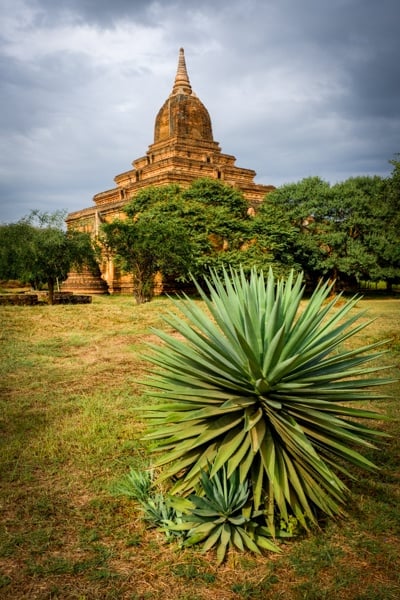
• Dress Code
Myanmar is a pretty conservative country, and Bagan is the city of temples.
This means knees and shoulders will need to be covered when you’re inside the bigger temples, although shorts are okay as long as they reach your knees.
On the other hand, most of the smaller temples in Bagan are unstaffed and no dress code is enforced, so it’s okay to show shoulders as long as you bring a sarong to cover up with, if needed.
At the bigger temples, they do check your dress code at the entrance and you’ll have to go barefoot inside, so sandals are the best choice of footwear in Bagan Myanmar.
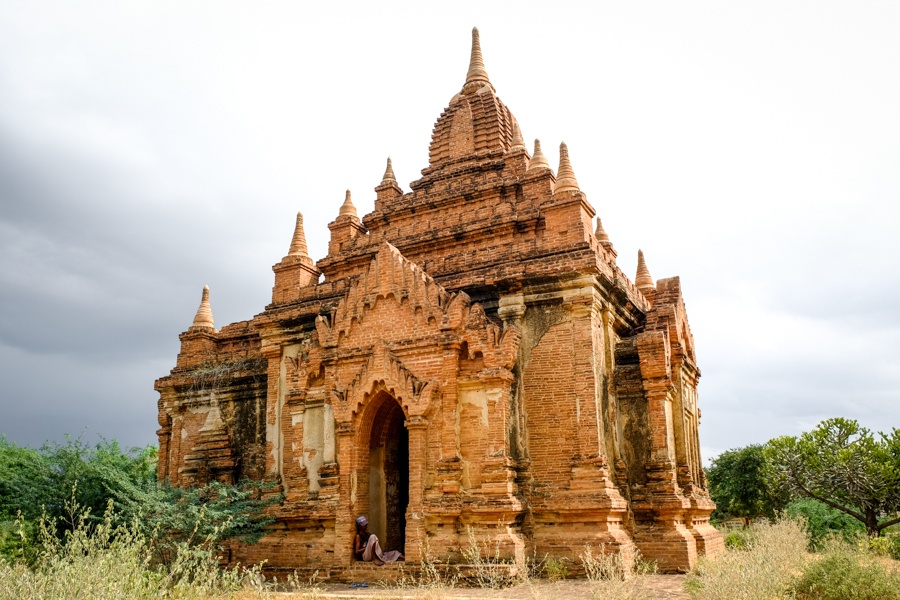
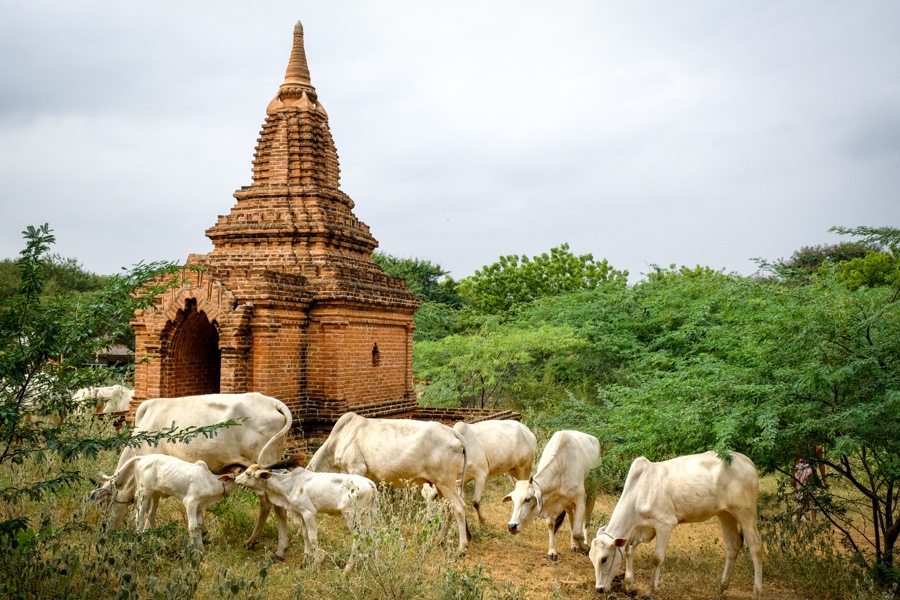
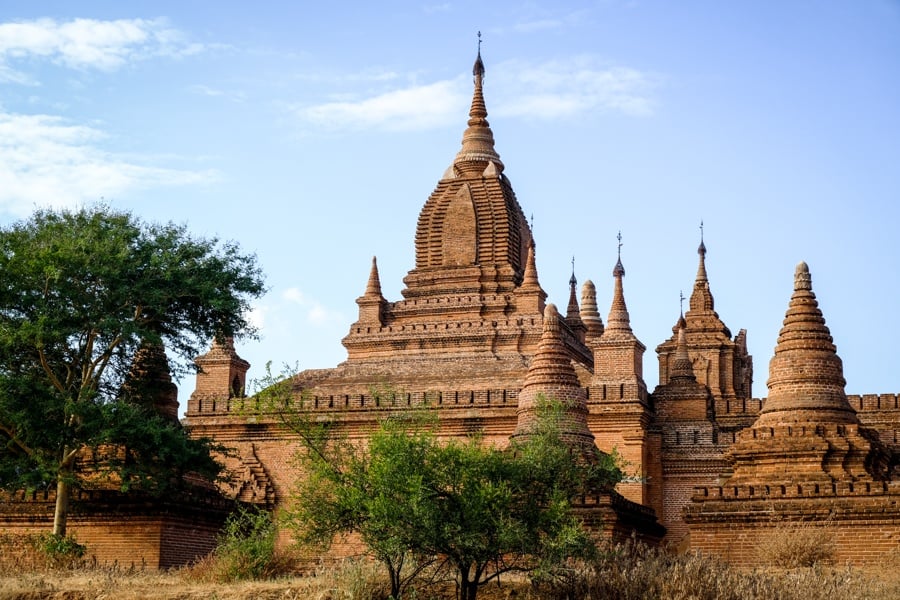
How To Get Around Bagan
The Bagan Myanmar temples are spread out over an area covering 40 square miles, so you’ll need transport to get around effectively.
The main way to get around Bagan is by taxi, bicycle, horse cart, or e-bike (electric scooter). Each of these has their own benefits and drawbacks:
- E-Bike: Most popular way to get around, and also one of the cheapest (~$5 per day). No license required. Basically these are silent, battery powered scooters. No real downside unless you don’t feel comfortable driving motorbikes in general.
- Taxi: Safest and most comfy way to get around. Most temples are still accessible by car, although you may have to walk a little extra. Main downside is just the expense (~$30 per day).
- Horsecart: The old fashioned way to get around, and it’s a unique experience. Main downside is it’s slower, and may be dusty.
- Bicycle: The cheapest transport (~$1 per day), and you get some exercise. Main downside is the heat and effort involved in cycling around Bagan.
We booked a private car and driver for our first day touring Bagan, and then rented e-bikes from our hotel for the second day.
This was perfect because it allowed us to experience the Burma temples via both types of transport, and we became familiar with the area in the comfort and safety of a car before tackling it by scooter.
I have to say, the e-bikes are a ton of fun, and it’s hard to beat the freedom of exploration that you have with these things.
If you pick up the more powerful Taiyuan model, you can fit 2 people per bike and the battery easily lasts a full day and then some.
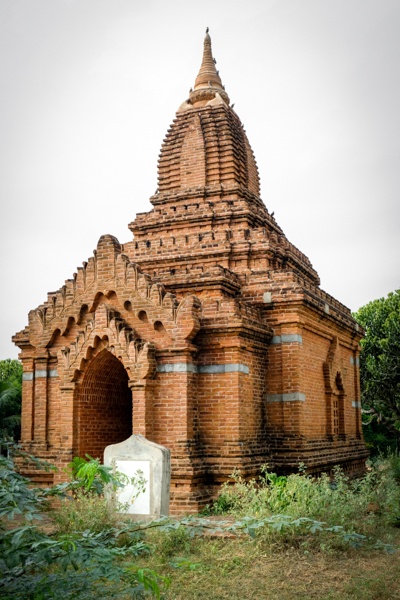
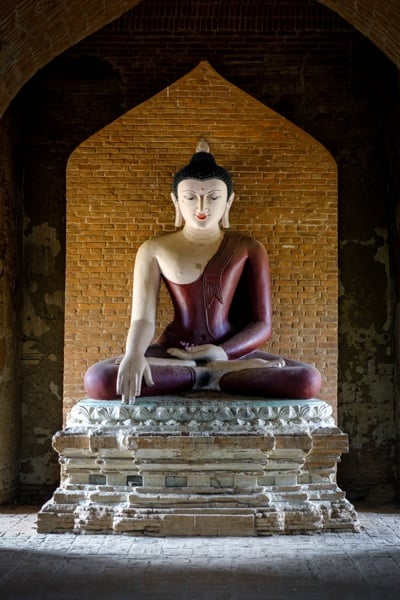
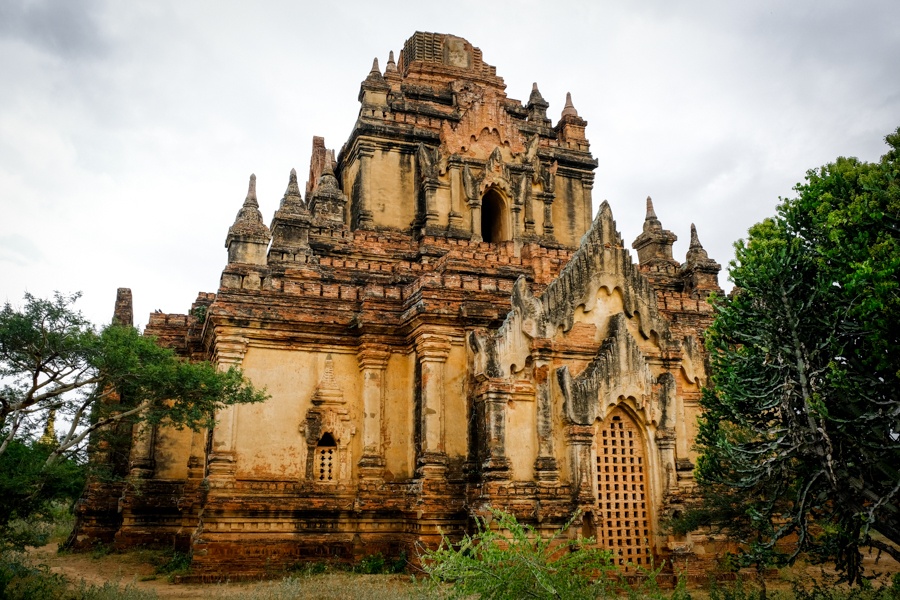
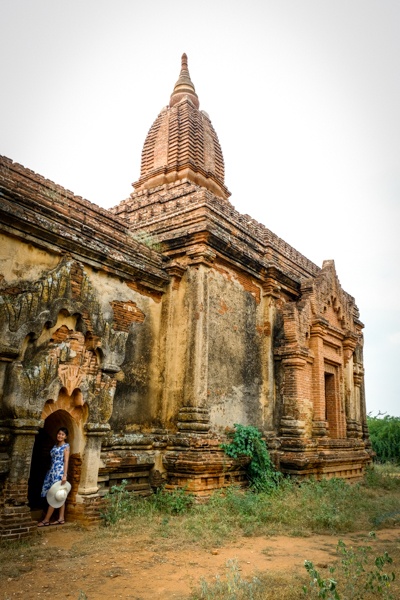
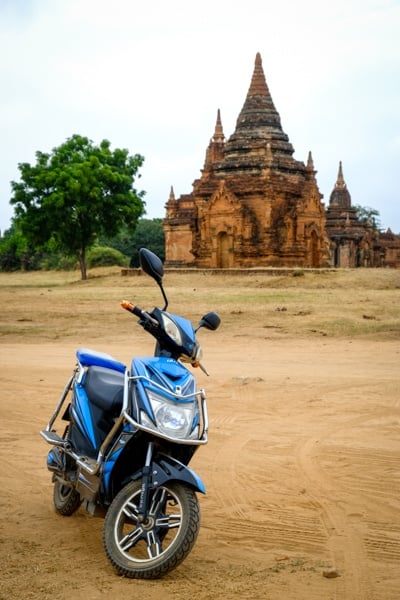
Best Bagan Temples To See
At this point, you’re probably wondering what are some of the best Burma temples and top things to see and do in Bagan Myanmar.
This is not a complete list of every interesting temple, monastery, and archaeological site to see at Bagan (there are thousands after all), but these are just some of the highlights that stood out to us during our time there.
We had to skip a few of the major temples (Htilominlo, Sulamani, etc) because they were under reconstruction when we went.
• Ananda Temple
One of the most popular and well preserved Burma temples in Old Bagan town.
It was built in the 1,100s AD.
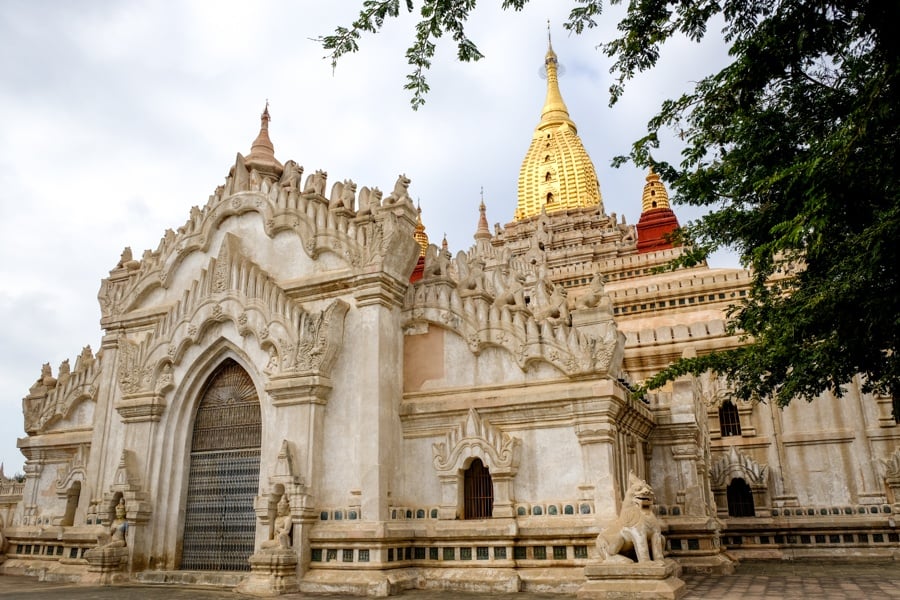
Ananda Temple
• Bupaya Pagoda
Bupaya was built 1,800 years ago and then destroyed in an earthquake, but this reconstruction is pretty true to the original.
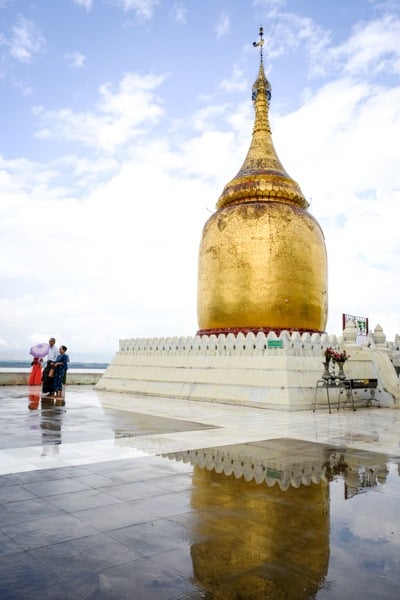
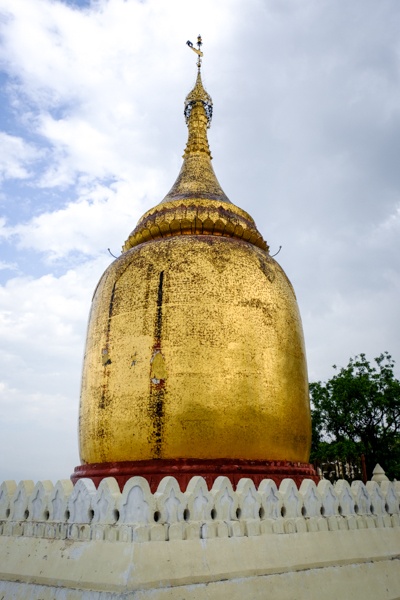
• Dhammayangyi Temple
This is the biggest temple in Bagan Myanmar, but isn’t in the best shape. There’s a dirt mound near it that’s good for sunset watching.
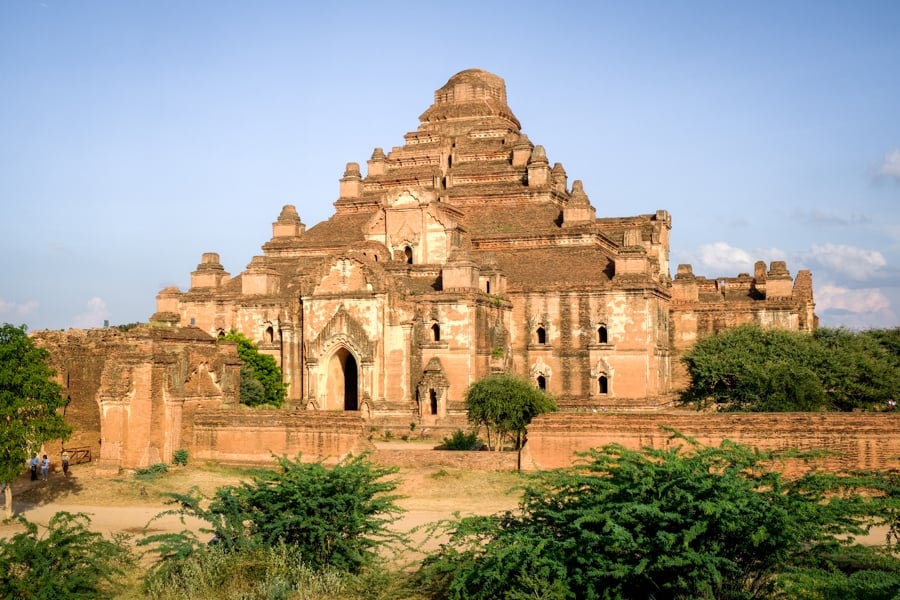
Dhammayangyi Temple
• Dhammayazika Pagoda
Red and gold pagoda surrounded by some smaller buildings.
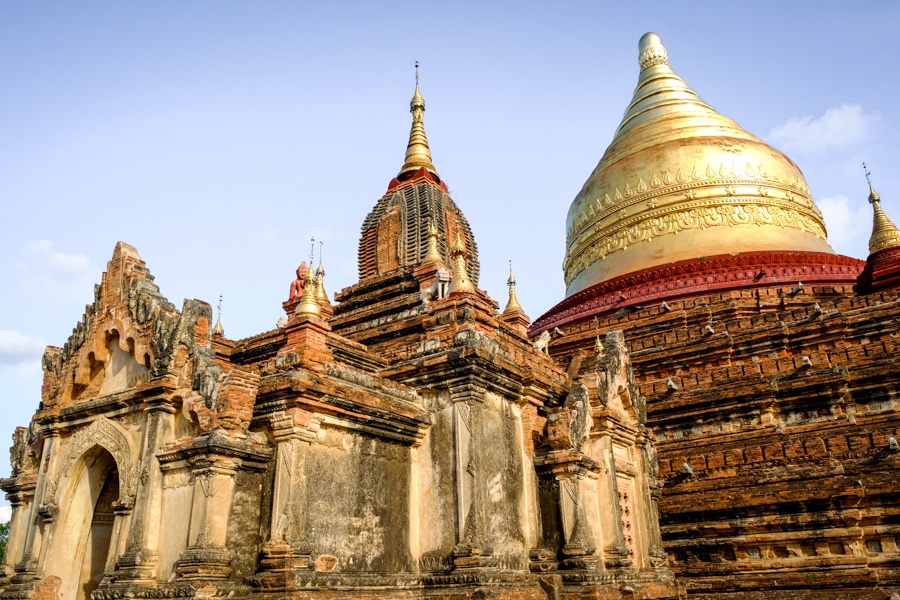
Dhammayazika Temple
• Gawdawpalin Temple
Huge white temple from the 12th century. You can’t go to the upper story anymore, but the outside looks amazing.
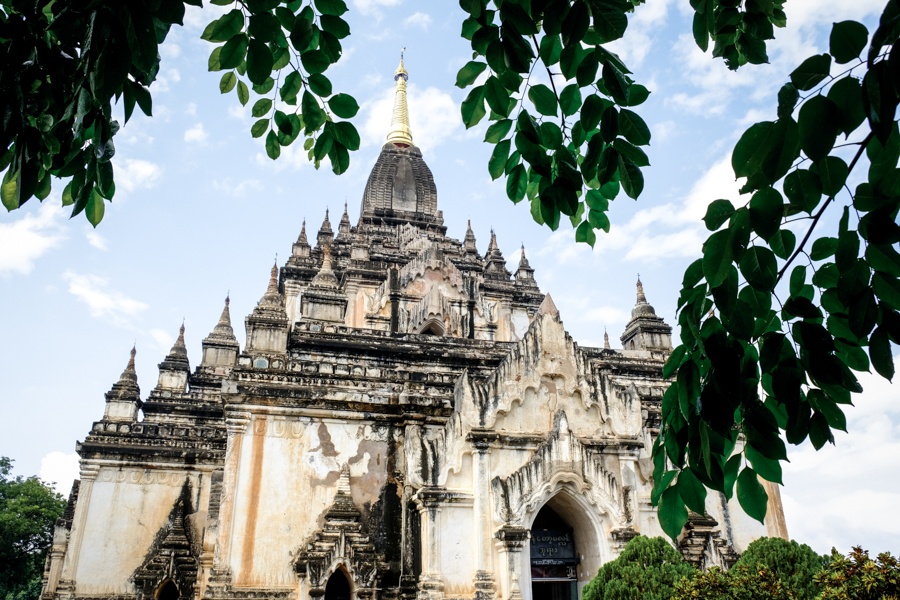
Gawdawpalin Temple
• Lay Myet Hna Temple
A nice one on the road between Old and New Bagan. There are artists here selling paintings and other handmade souvenirs.
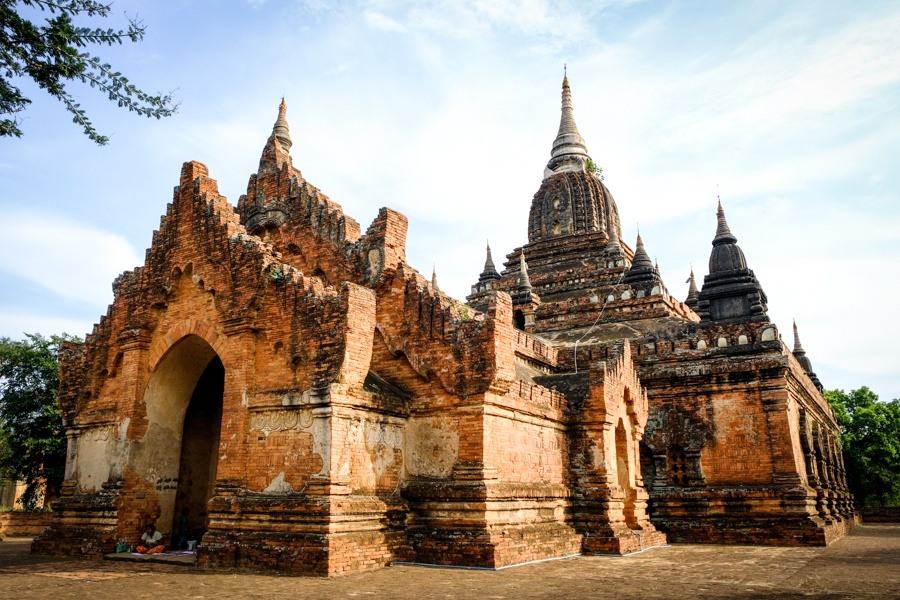
Lay Myet Hna Temple
• Mee Nyein Gone
This was one of our favorites near Old Bagan town. It has two huge temples you can explore, along with some smaller ones. I would love to climb to the top of these, but sadly it’s blocked off.
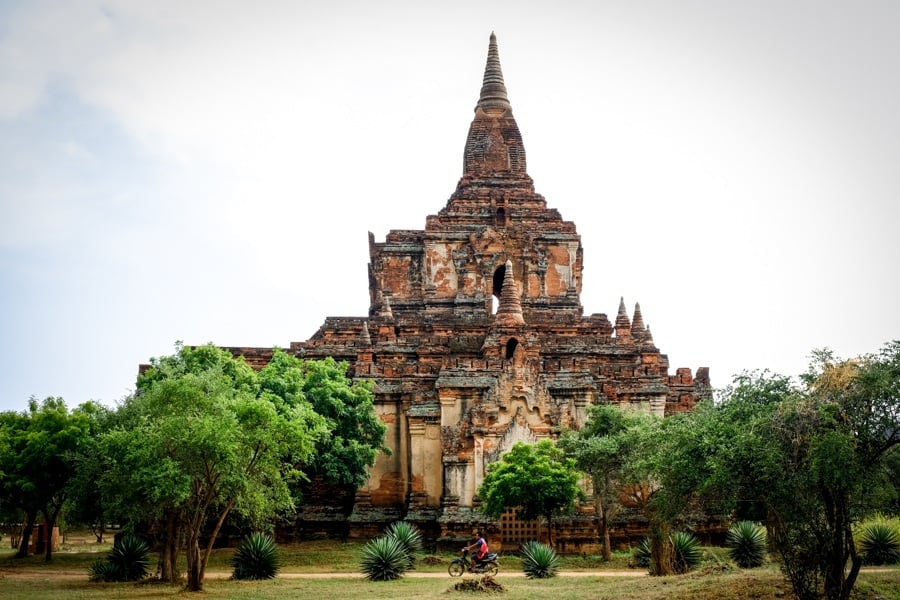
Mee Nyein Gone
• Pagoda 761
A handful of smaller temples near Dhammayangyi, but they’re in great condition.
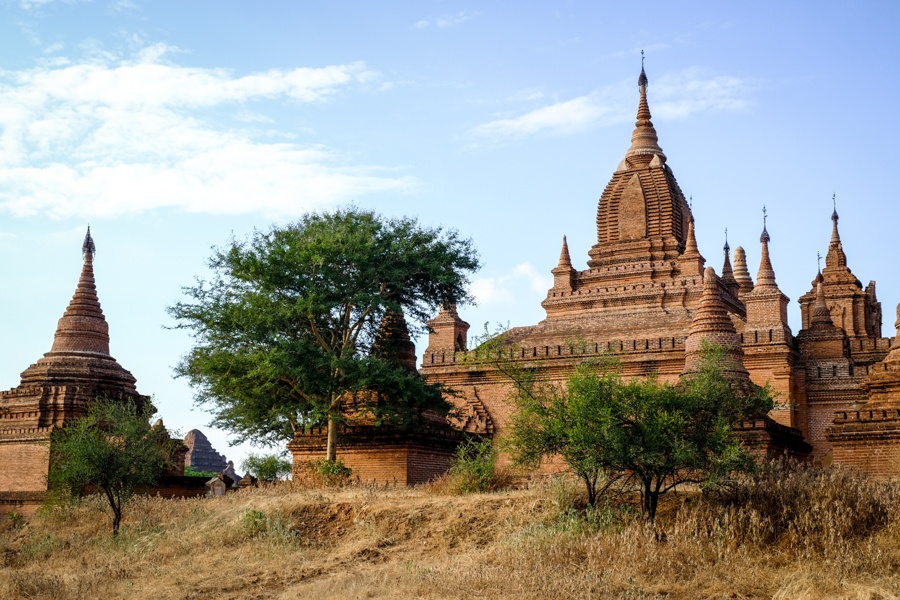
Pagoda 761
• Shwezigon Pagoda
Shiny gold leaf stupa built in the 11th century and located in Nyaung-U. Great for photos, just like the gold temples in Yangon!
• Soemingyi Pagoda
The pagoda itself was under renovation when we went, but the smaller temples surrounding it were great for photos and sunset viewing.
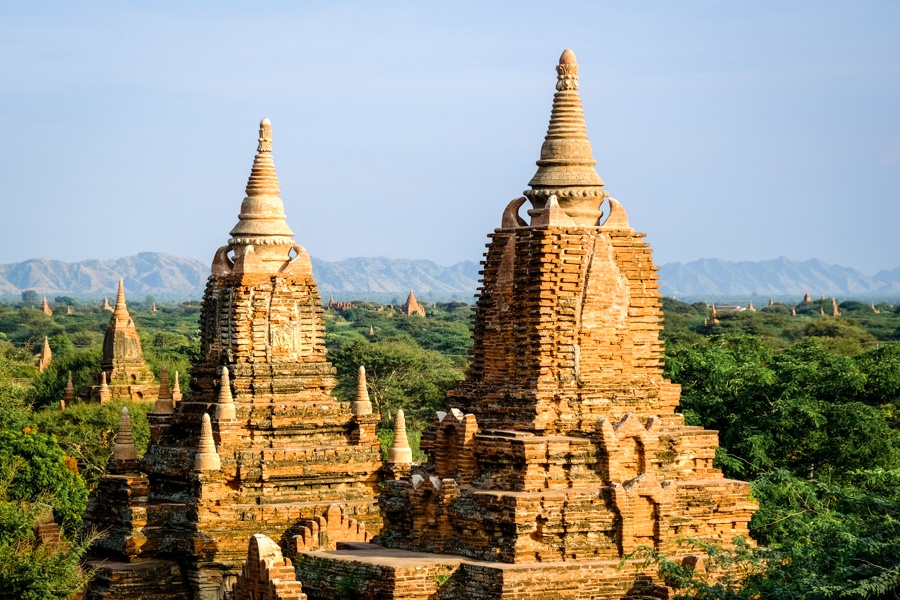
Soemingyi Pagoda
• Ta Wet Hpaya
One of our absolute favorite Bagan temples. It looks mysterious and surreal. There’s a photogenic doorway, and the temple is surrounded by an old wall.
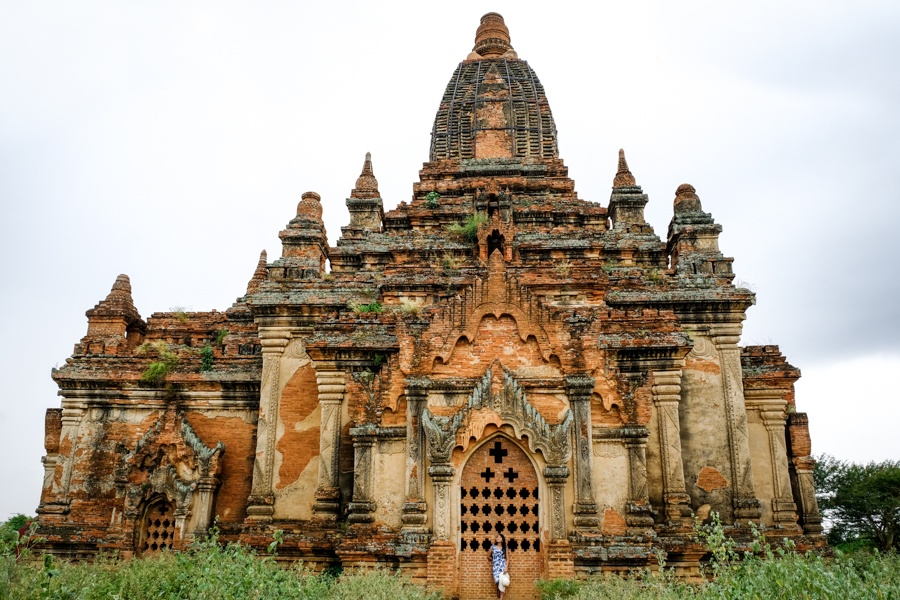
Ta Wet Hpaya
• Thatbyinnyu Temple
Another grey/white temple similar to Gawdawpalin, but parts of it were under reconstruction when we went.
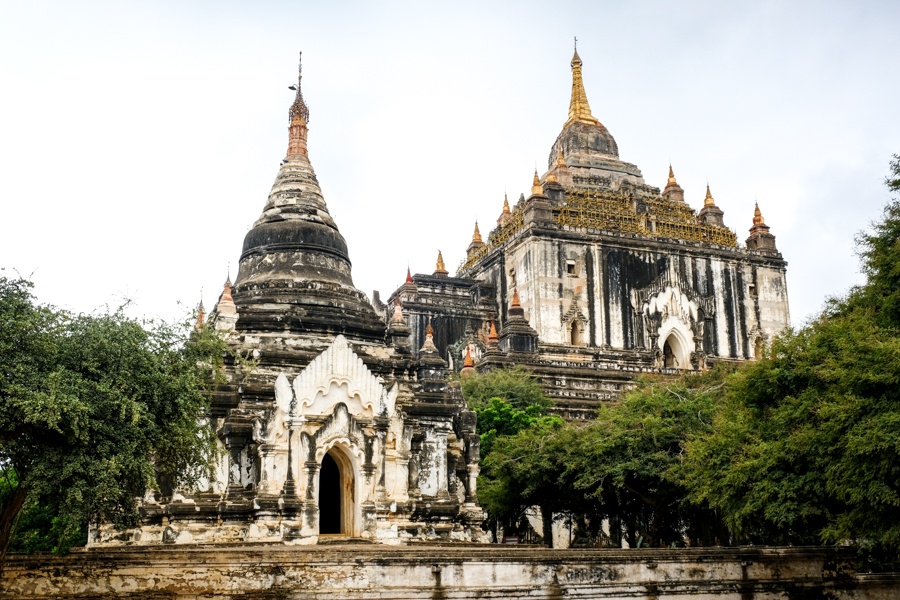
Thatbyinnyu Temple
• Yin-Ma-Na-Hpaya
A group of small temples near Htilominlo, except with no tourists.
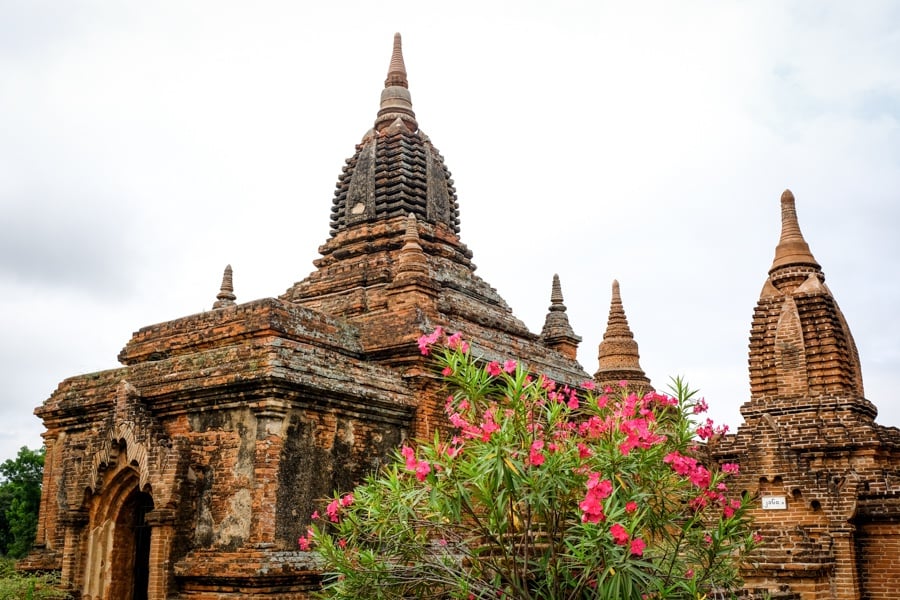
Yin-Ma-Na-Hpaya
• Unknown Temple #1
This is a group of small Myanmar temples on the edge of New Bagan town, near the Hotel Temple View Bagan. We were alone here except for a local and his cows.
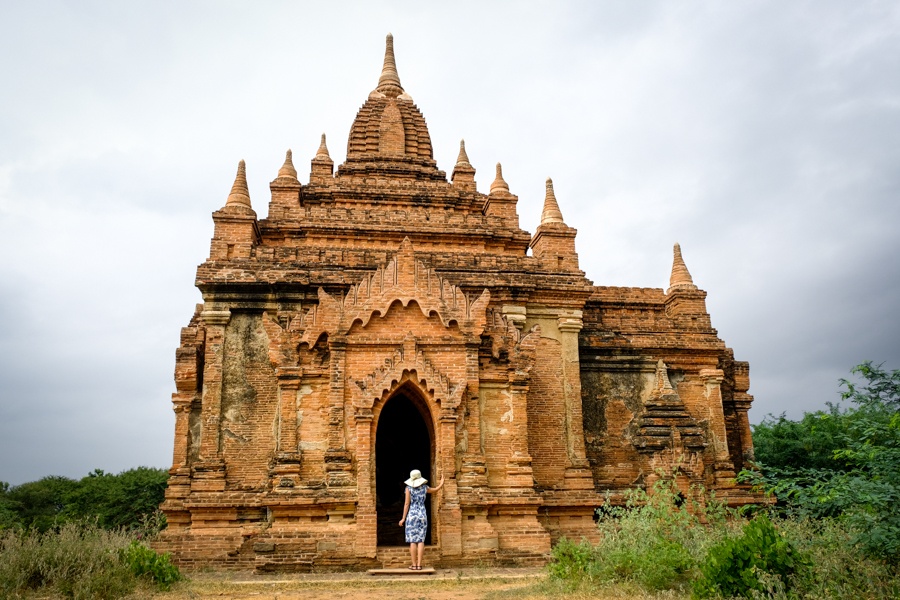
• Unknown Temple #2
This was one of our favorite Bagan temples, but somehow no one knows about it. It’s across the road from the Bagan Lodge Hotel. This one is a big temple and we had it all to ourselves. We were alone here!
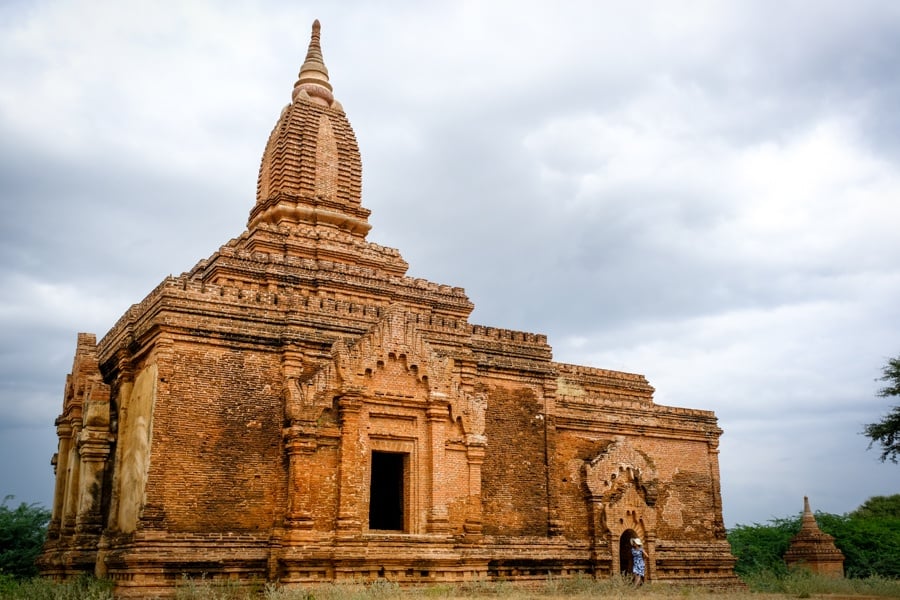
• Unknown Temple #3
The Google Maps pin at this spot only says “beautiful and clean toilet.” Ha. It’s near Htilominlo temple. There are a bunch of nice pagodas and temples here, and some local handmade souvenirs for sale.
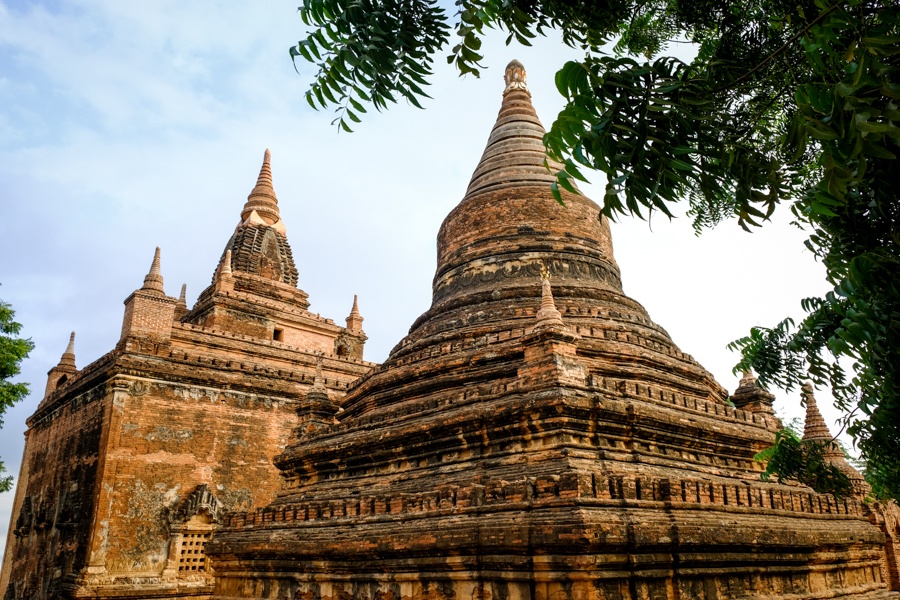
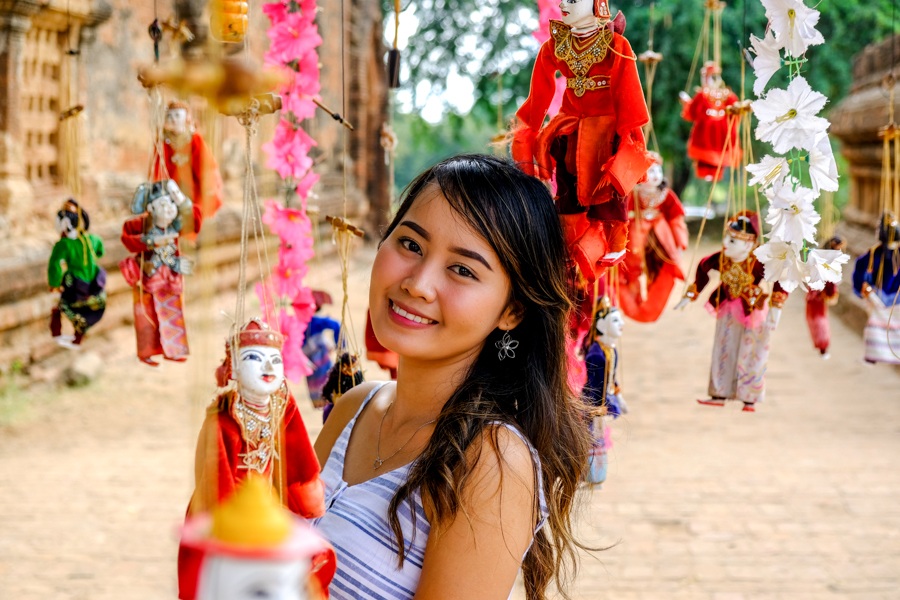
Where To Stay
There are three different towns situated around the Bagan Myanmar temples, but they’re all pretty similar:
- Old Bagan: More expensive, with high-end hotels. Many of the most famous Burma temples are located here.
- New Bagan: Lots of budget friendly and mid-range accommodation. Temples are very easy to reach. This is where we stayed, and we wouldn’t change a thing!
- Nyaung-U: Cheapest accommodation and lots of restaurants. Also has the NYU airport and the Nan Myint Tower for sunset viewing.
Trying to figure out these areas was a huge source of confusion for me when I was planning our Bagan trip, but after spending some time there I’m happy to report that it really doesn’t make a big difference which area you stay in.
The towns are all near temples you’ll want to see anyway, they all have good restaurants and hotels, and they’re not spaced very far apart from each other (just a couple miles).
Just find a Bagan hotel that works with your travel budget, and give it a go!
Where We Stayed
We stayed at the Bagan HMWE Hotel in New Bagan town for $19 USD per night and loved it.
For this price, we got a clean double room with free buffet breakfast on the rooftop, comfy bed, good WiFi, cold A/C, and hot showers.
The staff was very friendly and they rented us an electric scooter for exploring the Bagan temples, which were just a few minutes away from the hotel, along with some great restaurants!
Prices may fluctuate from time to time, so just keep an eye out for a good deal.
Is Myanmar Safe?
So is Bagan Myanmar a safe place to travel? Generally, yes.
There are a few small, isolated areas in Myanmar with occasional violence and instability, but these hotspots are far from Bagan, and tourists are not the target anyway.
We felt very welcome everywhere we went in the country. Burmese people in general are very friendly — a lot nicer than Thais or Cambodians, IMO.
Even though Myanmar is relatively new to tourism, many foreigners come here every year and have a great experience.
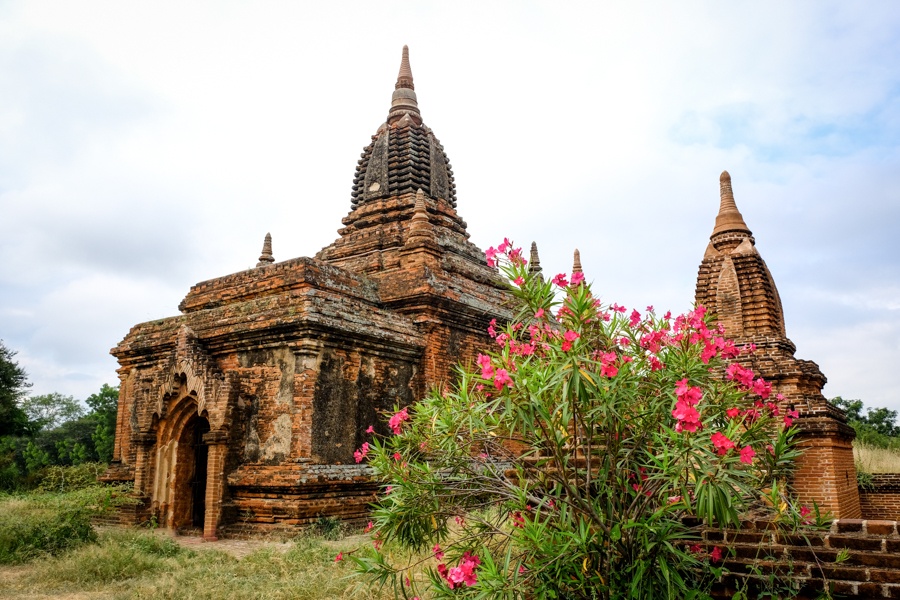
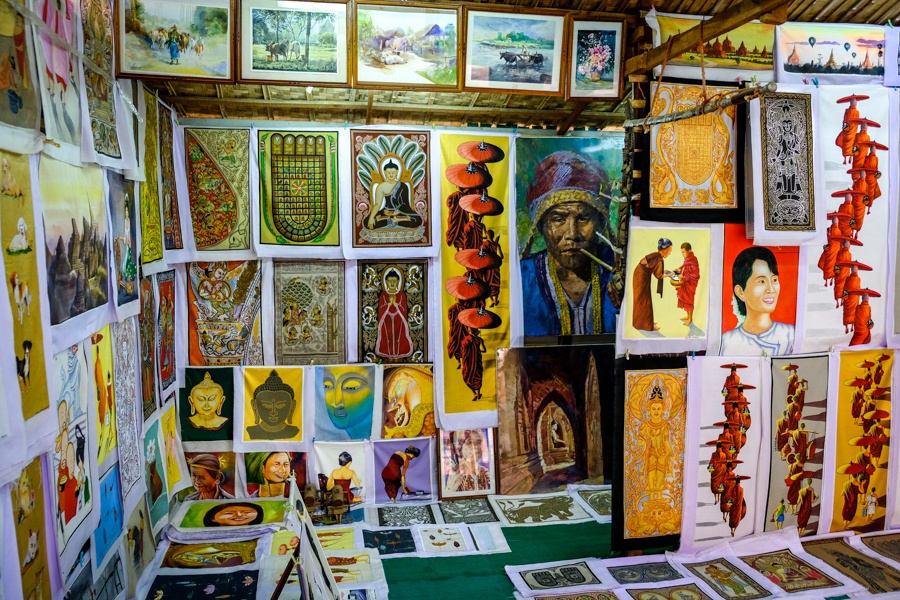
How Long To Stay
You can see the highlights and best temples of Bagan in 2 or 3 days.
One day would definitely be too short, but four days is probably overkill unless you have extra time and a huge appetite for Myanmar temples.
We spent two full days exploring the temples, but wished we had one more day.
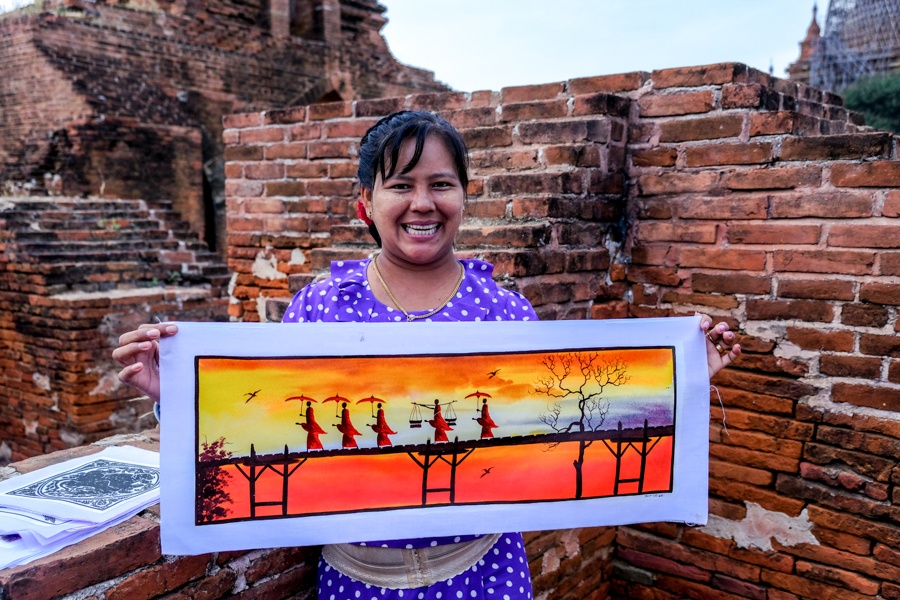
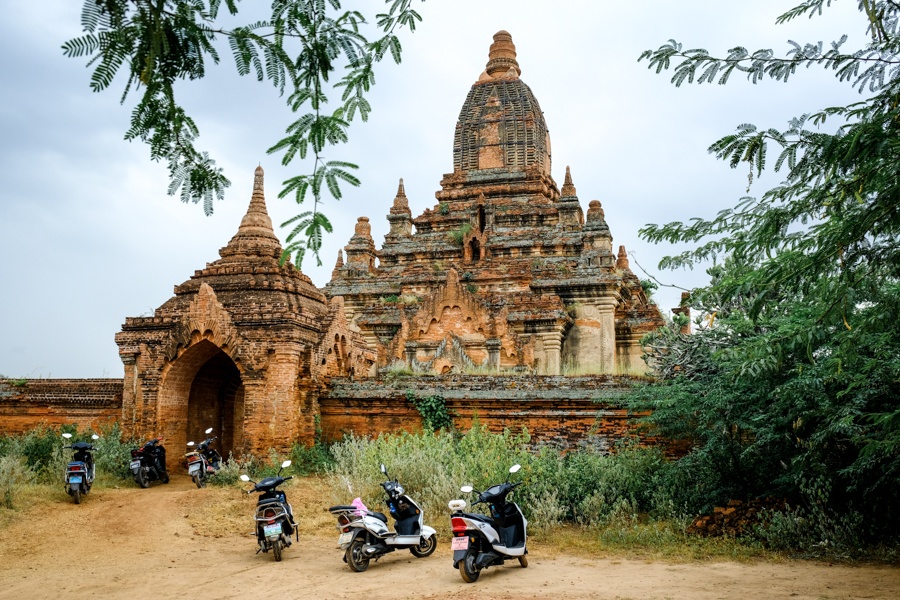
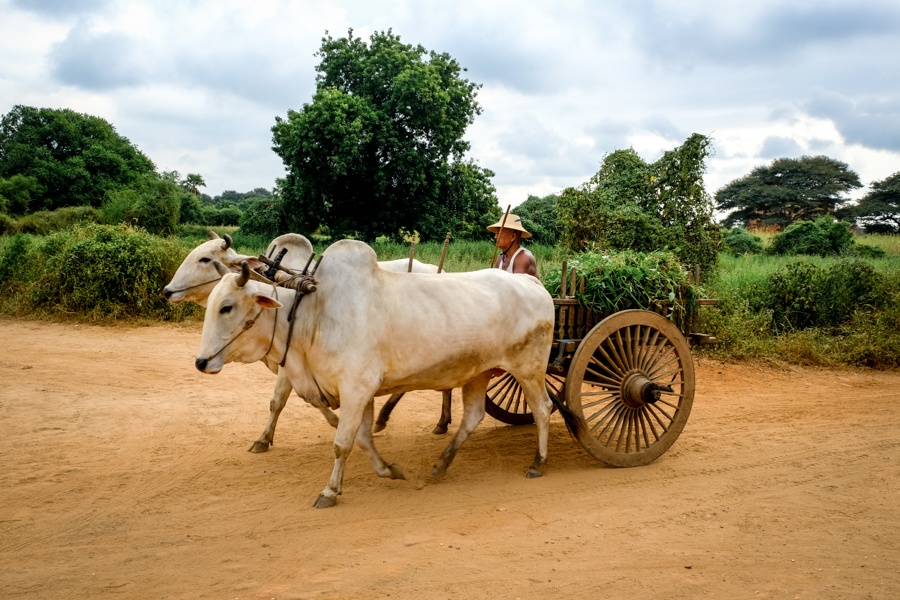
Best Time To Visit Bagan, Myanmar
The best time to visit Bagan depends on what you’re looking for:
- October – February: Best weather, with cooler temps (under 80 F). These are the most popular months for tourists, especially in December and January.
- March – May: Hottest months, with temps of 90 F (32 C) or higher. Less tourists than high season.
- June – September: Rainy season, but since Bagan sits in a dry plain with low annual rainfall, these months are not bad either.
Regardless of what month you choose to visit, the Bagan temples are bound to be spectacular.
Happy travels!
